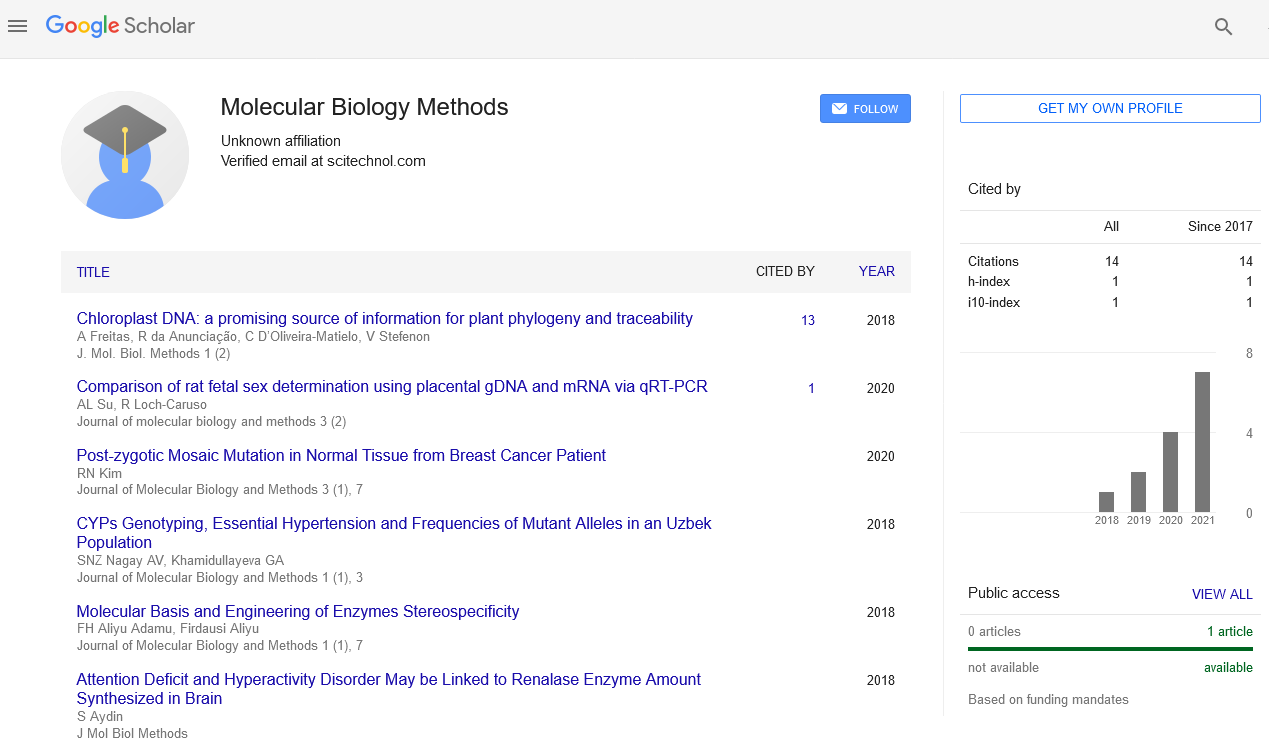Opinion Article, J Mol Biol Methods Vol: 5 Issue: 2
Process and Delivery System of Myocardial Dead Tissue in Human Blood Stream
Ute Deichmann*,
Department of Heamatology University of Cologne, Weyertal, Germany
Corresponding author: Ute Deichmann
Department of Heamatology University of Cologne, Weyertal, Germany
E-mail: utedeich@uni.de
Received date: March 03, 2022, Manuscript No. JMBM-22-62478;
Editor assigned date: March 05, 2022, Manuscript No. JMBM-22-62478 (PQ);
Reviewed date: March 14, 2022, Manuscript No. JMBM-22-62478;
Revised date: March 24, 2022, Manuscript No. JMBM-22-62478 (R);
Published date: March 31, 2022, DOI:10.4172/JMBM.1000114
Citation::Deichmann U (2022) Process and Delivery System of Myocardial Dead Tissue in Human Blood Stream. J Mol Biol Methods 5:2.
Keywords: Myocardial dead tissue, Cell infusion, Cardiomyocyte
Description
Myocardial dead tissue (MI), made by blood stream blockage of the heart coronary veins, is one of the most genuine illnesses with a high passing proportion around the world1MI brings about divider diminishing, fibrosis, left ventricular (LV) widening and decreased cardiovascular capacity. Because of the absence of cardiomyocyte self-age capacity, recovery of the infarcted region is unimaginable. The movement of primary and utilitarian debilitating of the LV occurs during the time spent LV renovating and lead to weakening of the clinical side effects, practiced prejudice and at last reason demise of the tormented patient. The long term mortality of cardiovascular breakdown (HF), as a significant medical issue all over the planet ,outperform half. Following HF movement, the heart creates moderate LV rebuilding.
Techniques
Albeit cardiovascular cell infusion has exhibited promising upgrades in heart work, however there are still limits that should be tended to before their clinical application. Significant issues related with cell infusion is the low engraftment where the majority of the cells are being lost to the vasculature or moving out of the infusion site. To conquer this issue, infused cells can be upheld by being conveyed with biomaterial network. It has been expressed that conveyance of legitimate material with cells or development elements can be a more powerful technique to reestablish cardiovascular capacity contrasted and infusing just materials or cells. As a matter of fact, injectable biopolymers permit the host body to proceed as a bioreactor and reproduce the harmed tissue in situ. Among biopolymers, which have been used for MI treatment, alginate has been shown improvement in LV working creature models of MI. Beforehand, it was shown that intramyocardial infusion of alginate in canines with ongoing cardiovascular breakdown could increment LV thickness and recuperate LV design and capacity. Aside from diminishing divider stress that underlies the advantages of alginate treatment, increment of LV divider thickness and decrease of LV size are different components, which can prompt a diminished end-diastolic length of contractile component. Moreover, alginate treatment can reduce cardiomyocyte hypertrophy incited by persistent LV broadening and subsequent increase of mechanical stretch. Alginate hydrogel embed, likewise, worked on LV capacity and halted moderate rebuilding in ongoing HF canines.This blend helpful methodology was considered to forestall patients with cutting edge HF encountering end-stage illness. Electrical reconciliation of the protected hydrogels with the infarct myocardium can be deferred prompting the arrhythmias.
In any case, electroactive hydrogels could further develop cell electrical coupling and coordinated constriction of the cardiovascular cells; which is fundamental for the successful combination with the host tissue. Graphene-based nanomaterials, particularly graphene oxide (GO) are probably going to actually support materials for the reestablish of ischemia in heart tissues because of their exceptional high mechanical and electrical properties. Decreased graphene oxide (rGO) as a carbon based nanomaterials shows itself hostile to oxidant action in this manner sp2 carbons assume a significant part in revolutionary searching, for example, ROSs prompts shield the cells from exorbitant oxidative pressure through extremist adduct arrangement and electron move.
Already, we exhibited the promising in vitro consequences of ALG-rGO electroactive hydrogel for cardiovascular application. Poison levels or biocompatibilities and creating of collagen and connective tissue of GO have not been completely examined. Thusly, we utilized our recently evolved decrease methodology (GO-containing gel development followed by gentle substance decrease) to further develop the counter oxidizing capacity by delivering rGO with its negligible conglomeration and afterward MSCs were epitomized in this composite miniature gels to expand the restorative exercises. Here, we further assessed the remedial results of ALG infusion joined with MSCs and rGO in a rodent model of ischemic myocardial dead tissue to work on heart work and actuate neovascularization.
 Spanish
Spanish  Chinese
Chinese  Russian
Russian  German
German  French
French  Japanese
Japanese  Portuguese
Portuguese  Hindi
Hindi 